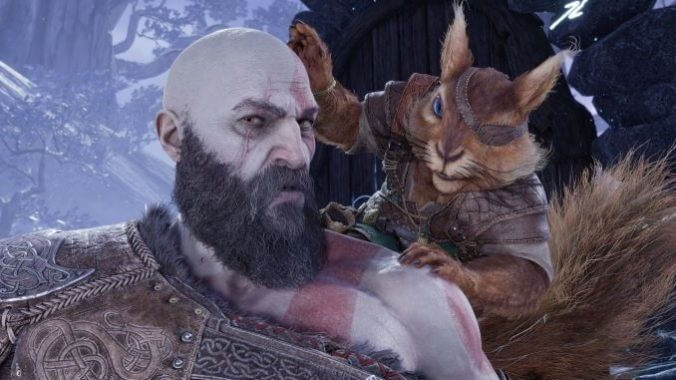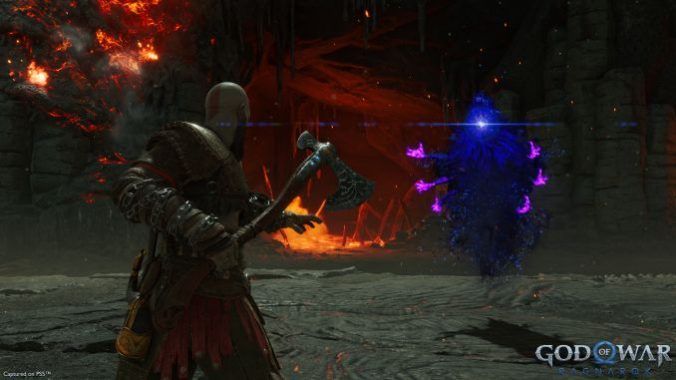God of War Ragnarök Is a Slow, Meandering Sequel with Just Enough of the Original’s Spark

God of War Ragnarök is a fast-paced, exciting game. Combat is brisk and beautiful. There are boss fights that will absolutely blow your mind. The story goes places you’d never expect and places you’ll see from miles away, and both often end up being amazing. You’ll fight gigantic, towering enemies, team up with unlikely allies, and see awesome vistas from across the Nine Realms. And every step of the way you’ll think about the ungodly sums of money pumped into its development. God of War Ragnarök looks like an expensive game, and that expense pays off.
It starts around three years after the events of its predecessor, in the midst of Fimbulwinter, the snowpocalypse that precedes the actual titular apocalypse of Norse mythology. Kratos’ (Christopher Judge) son, Atreus (Sunny Suljic), now also known by his Norse name, Loki, has aged into a teenager, and although the two definitely have a healthier relationship since the events of the previous game, there’s still a lot of friction between the two surrounding destiny, prophecy and who Atreus ultimately wants to be. In many ways, Ragnarök feels more like Atreus’ story than Kratos’, aided by many extended sequences in which you play as the god of mischief himself.
Playing as Atreus never feels quite as fun or fleshed-out as playing as his father, but the switch in focus to a playstyle centered around ranged attacks and more nimble movement is a nice change of pace from the slower, more powerful god of war. The segments in which you play as Atreus, however, are often the most interesting from a story perspective, as he meets with intriguing characters and gets access to information Kratos is unaware of. It should be noted that, aside from one possible late-game exception, the camera still refuses to cut away, just like it did in the previous game, simply moving its perspective to the other character when it’s time to play as them.
The majority of time is still spent playing as Kratos, however, with Atreus and other allies providing support. Combat as the stoic father feels just as good as it did in 2018, with Kratos dolling out pain with both the Leviathan Axe and the Blades of Chaos, the latter of which you gain access to very early in the game rather than the tens of hours you have to wait to obtain them in 2018. That’s a good thing, because they remain the most exhilarating weapons in the game. The way you’re able to sweep the battlefield with the wide swings of these blazing blades never gets old, even when other elements of the game start to do so.
That’s because between the amazing boss fights and setpieces, there’s a lot of time spent fighting the same hellwalkers, wights and raiders that you fought last time, with not too much to shake things up. I understand that this is an action adventure game, but I personally would have preferred a tad less action in exchange for a bit more adventure. For the most part, the puzzles aren’t too challenging, with the majority coming in the form of activating the three symbols on a chest to obtain a health or rage upgrade, but one puzzle in particular took me nearly an hour before I realized it wasn’t my stupidity but a bug that was keeping me from completing it.

-

-

-

-

-

-

-

-

-

-

-

-

-

-

-

-

-

-

-

-

-

-

-

-

-

-

-

-

-

-

-

-

-

-

-

-

-

-

-

-








































